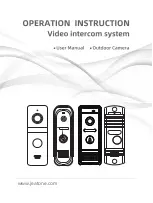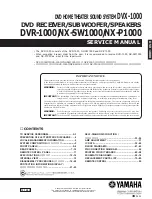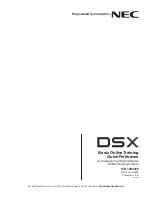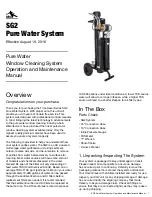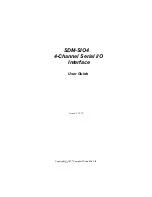
After repairs are completed, restore power gradually using a variac, to avoid overcurrent.
- Current consumption at AC 230 V, 50 Hz in NO SIGNAL mode should be
~250 mA. (E/EG)
- Current consumption at AC 230-240 V, 50 Hz in NO SIGNAL mode
should be ~250 mA. (EB)
1.4. Protection Circuitry
The protection circuitry may have operated if either of the following conditions are noticed:
- No sound is heard when the power is turned on.
- Sound stops during a performance.
The function of this circuitry is to prevent circuitry damage if, for example, the positive and negative
speaker connection wires are "shorted", or if speaker systems with an impedance less than the
indicated rated impedance of the amplifier are used.
If this occurs, follow the procedure outlines below:
1. Turn off the power.
2. Determine the cause of the problem and correct it.
3. Turn on the power once again after one minute.
Note:
When the protection circuitry functions, the unit will not operate unless the power is first turned off and
then on again.
2. Prevention of Electro Static Discharge (ESD) to
Electrostatically Sensitive (ES) Devices
Some semiconductor (solid state) devices can be damaged easily by electricity. Such components
commonly are called Electrostatically Sensitive (ES) Devices. Examples of typical ES devices are
integrated circuits and some field-effect transistors and semiconductor “chip” components. The
following techniques should be used to help reduce the incidence of component damage caused by
electro static discharge (ESD).
1. Immediately before handling any semiconductor component or
semiconductor-equiped assembly, drain off any ESD on your body by
touching a known earth ground. Alternatively, obtain and wear a
commercially available discharging ESD wrist strap, which should be
removed for potential shock reasons prior to applying power to the unit
under test.
2. After removing an electrical assembly equiped with ES devices, place
the assembly on a conductive surface such as aluminium foil, to
prevent electrostatic charge build up or exposure of the assembly.
3. Use only a grounded-tip soldering iron to solder or unsolder ES
devices.
4. Use only an anti-static solder remover device. Some solder removal
devices not classified as “anti-static (ESD protected)” can generate
6
Summary of Contents for SA-PM3E
Page 19: ...19 ...
Page 29: ...Step 1 Detach connector CN900B Step 2 Disconnect FFC cable CN802 and CN804 29 ...
Page 43: ...43 ...
Page 44: ...44 ...
Page 45: ...45 ...
Page 47: ...47 ...
Page 51: ...51 ...
Page 52: ...52 ...
Page 58: ...11 6 Checking and Repairing of Deck Deck Mechanism P C B 58 ...
Page 76: ...21 Troubleshooting Flowchart CD Section Circuit 76 ...
Page 77: ...22 Exploded Views 22 1 Cabinet Parts Location 77 ...
Page 78: ...22 2 Deck Mechanism RAA4402 S Traverse Part Location 22 3 Packaging 78 ...
Page 82: ...117 RML0371 FR LEVER M 82 ...
Page 86: ...CP1902 K1KA09BA0153 9P CONNECTOR M 86 ...
Page 88: ...FC601 EYF52BCY FUSE CLIP M 88 ...
Page 92: ...R804 D0GB472JA041 4 7K 1 16W M 92 ...
Page 94: ...R870 ERJ3GEYJ102V 1K 1 16W M 94 ...
Page 96: ...R1210 D0GB333JA007 33K 1 16W M 96 ...
Page 98: ...R7349 D0GB183JA007 18K 1 16W M 98 ...
Page 100: ...C499 F1H1H331A013 330P 50V M 100 ...
Page 102: ...C846 ECA1HAK010XB 1 50V M 102 ...
Page 104: ...C1202 F1H1H471A219 470P 50V M 104 ...
Page 128: ......
Page 129: ......






















